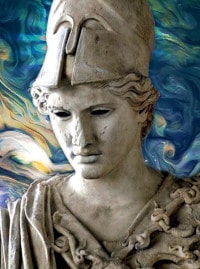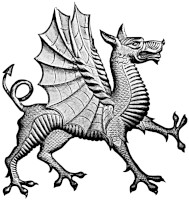“Through the wicket gate,” and “to try the world of spirits,” are two of Allen’s inspiring phrases employed when describing the military actions he conducted up to the occasion of his capture by British forces. “All freemen in hand,” was his description of his mustered force, much more highly motivated than the conscript defenders. Indeed, Allen would recruit for his second strike force into Canada, mostly French and English Canadian subjects.
This is not a history at all concerned with the military operation of Allen, but with class, ethnic, civil and military order, concord and discord, an inquiry into Peak Plantation America Society, using Allen’s narrative as a lens. Below, no attempt is made to describe the operation. Better operational accounts will be found from Benedict Arnold’s perspective, as Allen was only in position to give a clear account of his taking of Ticonderoga.
Men like Major Rogers of the French and Indian War, Allen, Arnold and George Rogers Clark were able to conduct successful operations cross country normally impassible to regular conscript troops, not because they were super men, or because regulars were not fit enough to hike. Rather, it was the fact that they led volunteers. The maneuver of slave soldiers such as the Hessians, without horsemen of the upper class to act as military police along regular roads and tracks, caused a conscript force to melt away. The armies of the age were organized along brutal lines of forced service, with the officer armed with a pistol or poleaxe to kill and threaten reluctant soldiers, corralled by the horsemen and coaxed into battle against a similar enemy. Only the grenadiers, who acted as military police on foot and shock troops and were treated more closely to a modern professional soldier, could be trusted to make bold action in the field.
Like the pirates, who with oaths and black flags cowed captains into submission, captains who had few or any men willing to fight for them, Allen and his Green Mountain Boys, postured at Ticonderoga and the garrison submitted. Ethan Allen grew on this reader through the first three sections of the book.
He begins in the final line of his introduction written on March 24 1779, by apologizing for having “missed a liberal education!”
It will be found in section 4 that he imbibed the liberal views of his age.
“...a systematic and bloody attempt at Lexington, to enslave America…” is a statement that demonstrates that Allen agreed with Ramses II that nations of peoples were natural objects of wholesale enslavement by confinement, military suppression and taxation.
The following excerpt from his speech before the storming of the fort, “through the wicket-gate” suggests that his Green Mountain Boys were runaways and vagabonds that he, in part, used as straw buyers in his Onion River land settlement scheme. He was very much a natural frontier war boss, like Daniel Boone.
“...you have, for a number of years past, been a scourge and terror to arbitrary power. Your valour has been famed abroad… You that will undertake voluntarily, poise your firelocks…”
In an engagement with one of only two men of the garrison who made fight, Allen recounts, “My first thought was to kill him with my sword; but, in an instant, altered the design and the fury of the blow to a slight cut on the side of the head; upon which he dropped his gun and asked quarter [1], which I readily granted him.”
“This surprise was carried into execution in the gray of the morning of the 10th of May, 1775. The sun seemed to rise that morning with a superior luster…”
“Happy it was for me (at that time) that the then future pages of the book of fate, which afterwards unfolded a miserable scene of two years and eight months imprisonment, was hid from my view.”
Allen then discusses his ill-fated operation into Canada, in order to cut the tribal enemies of the frontiersmen out of supply, under Arnold with psychopathic honesty: “… did Canada compose a part of the American empire.”
Allen was then sent with a major Brown and certain interpreters into Canada to let the inhabitants know that no violence against French folk or catholic faith was intended and that this was purely a battle against the “English garrisons.” He describes this duty as “preaching politics,” an early advocate of the raising of the United States Government as a living, even breeding, deity.
As the attempt on Montreal went sideways Allen writes, “I began to conclude myself to be in a premunire…” [2]
The defenders in Montreal consisted of 500 men, only 40 being regular troops, the rest a mix of French, English and Indian. Most of Allen’s men were Canadian, French and English. Allen discovers in trying to retreat that the countrymen and Indians could run as quick as his fellows but soldiers could not. Soldiers of the period were fitted with crippling footwear, one size fits all hard shoes with no accommodation for right or left foot. Freemen could wear fitted boots and moccasins. Slaves and servants were generally barefoot. Footwear, or the lack of such, was part of the social system of control.
Allen is surrounded and hands his sword to an officer. He is then attacked by an Indian and protected by the officer:
“...a savage, part of whose head was shaved, being almost naked and painted, with feathers intermixed with the hair of the other side of the head, came running to me with an incredible swiftness; he seeming to advance with more than mortal speed (as he approached near me, his hellish visage was beyond all description, snake eyes appear innocent in comparison of his, his features extorted, malice, death, murder, and the wrath of devils and damned spirits are elements of his countenance)…”
Avoiding being killed by this man, who targeted only an officer, and not soldiers, Allen was attacked by another racial indistinct but shockingly dressed and painted warrior;
“...in less than half a minute, I was attacked by just such another imp of hell…” who was driven off with his fellows by a One-Eyed Canadian and an Irishman who “drove away the fiends, swearing by Jasus he would kill them.”
The mentions of race are limited to Irish, French and English. Canadians could be of any race and the Indians are not noted as racial distinct, but morally, politically and culturally opposite of the Americans. Men such as Rogers, Boone, Clark would have named the tribal affiliation at a glance. These frontier leaders also allied with tribes. Allen was a more progressive-minded type of invader, representing a political force at war with tribalism itself in the cause of a representative empire, more clearly formed on the Roman model than any other modern national identity. [3]
…
Notes
-1. To grant “quarters” to include a grant of shelter, food and protection against violence.
-2. An offense against the English Crown also spelled Praemunire, which may also be confounded with the notion of the old Latin term to make guard in a forward position and here might be assigned both meanings as a river crossing was involved.
-3. Napoleonic France and later Fascist Italy and Germany borrowed heavily on Roman symbology. But America, who likewise adopted Roman symbology and civic architecture, more closely resembles in its military industrial integration and extra regional expansion the Roman ethic of citizen soldiers taking extreme risks that ultimately enrich a plutocratic elite.
To support Plantation America research and examine annotated and summarized primary source texts go to:
link › patreon.com/jameslafond











